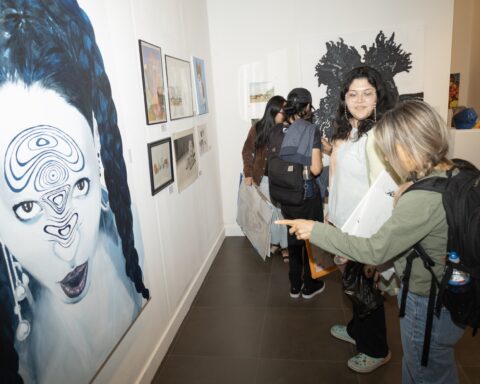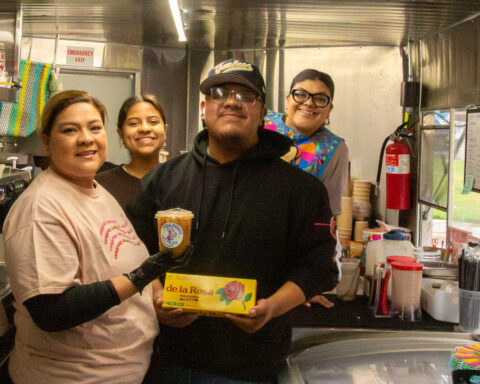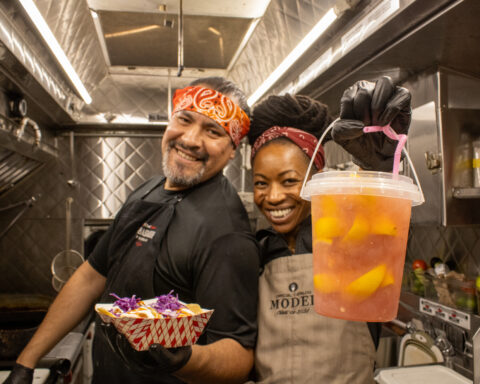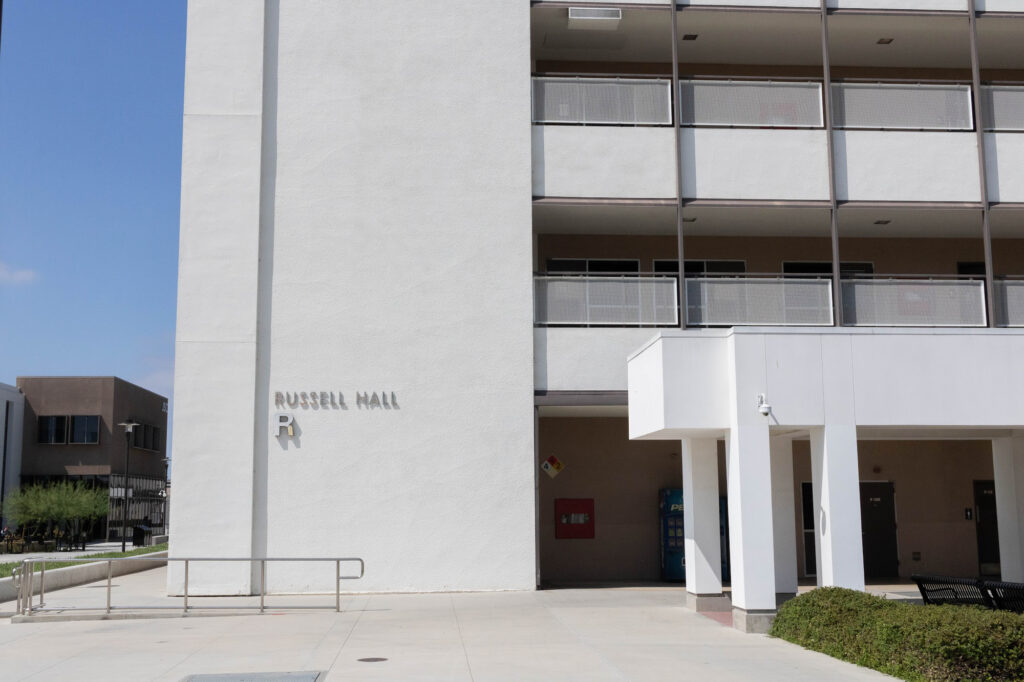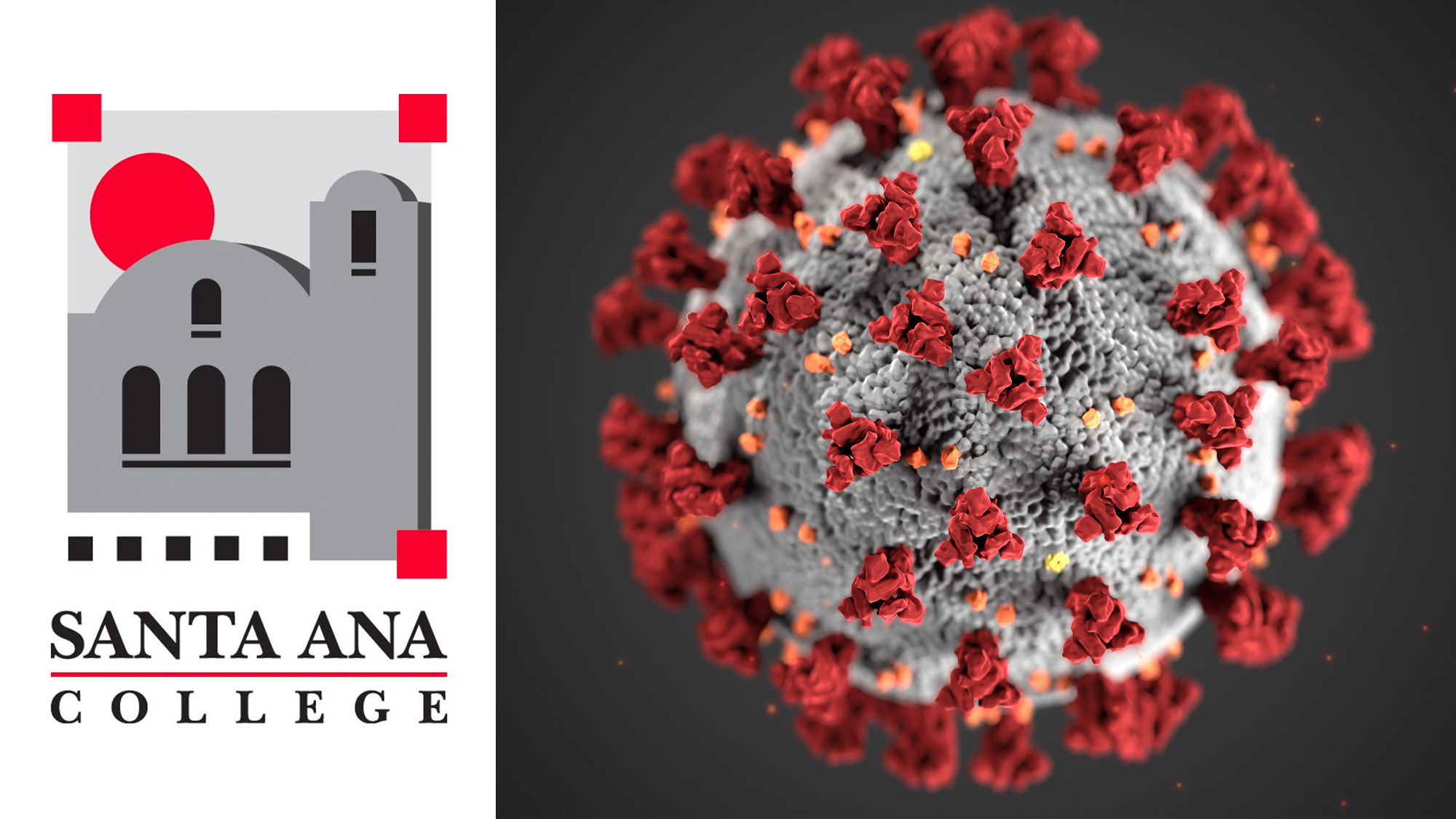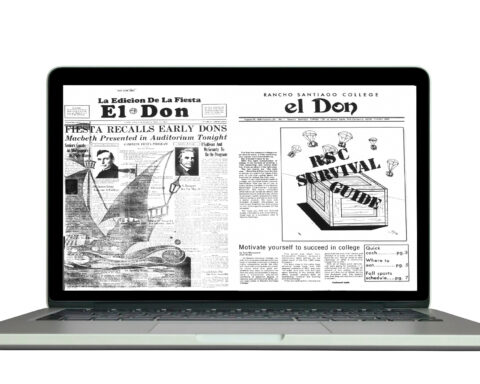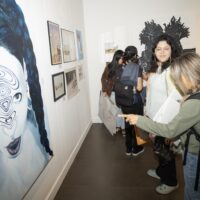As a kid in elementary school, James ‘Roach’ Rocha would scan the same page in his textbook over and over and over again.
“We would have one page on Caesar Chavez and one paragraph on the Brown Berets but we never touched those, we just skipped them all,” he said.
20 years later, Roach finds himself collecting books and curating art shows—all specific to his identity, being a Chicano.
“As a curator, this is just a side thing. I want to illustrate and write books,” he said. “As an artist, that’s the way I wanna go.”
Sept. 2 marked Roach’s third year of curating art shows for Santa Ana College, in which he tasked over twenty artists to envision what Aztlan means to them. Alongside Roach were curators Briyana Negrette and Abram Moya Jr.
Each interpretation was collected into a single gallery, where Roach was able to blend his love for teaching and art, creating Visions of Aztlan.
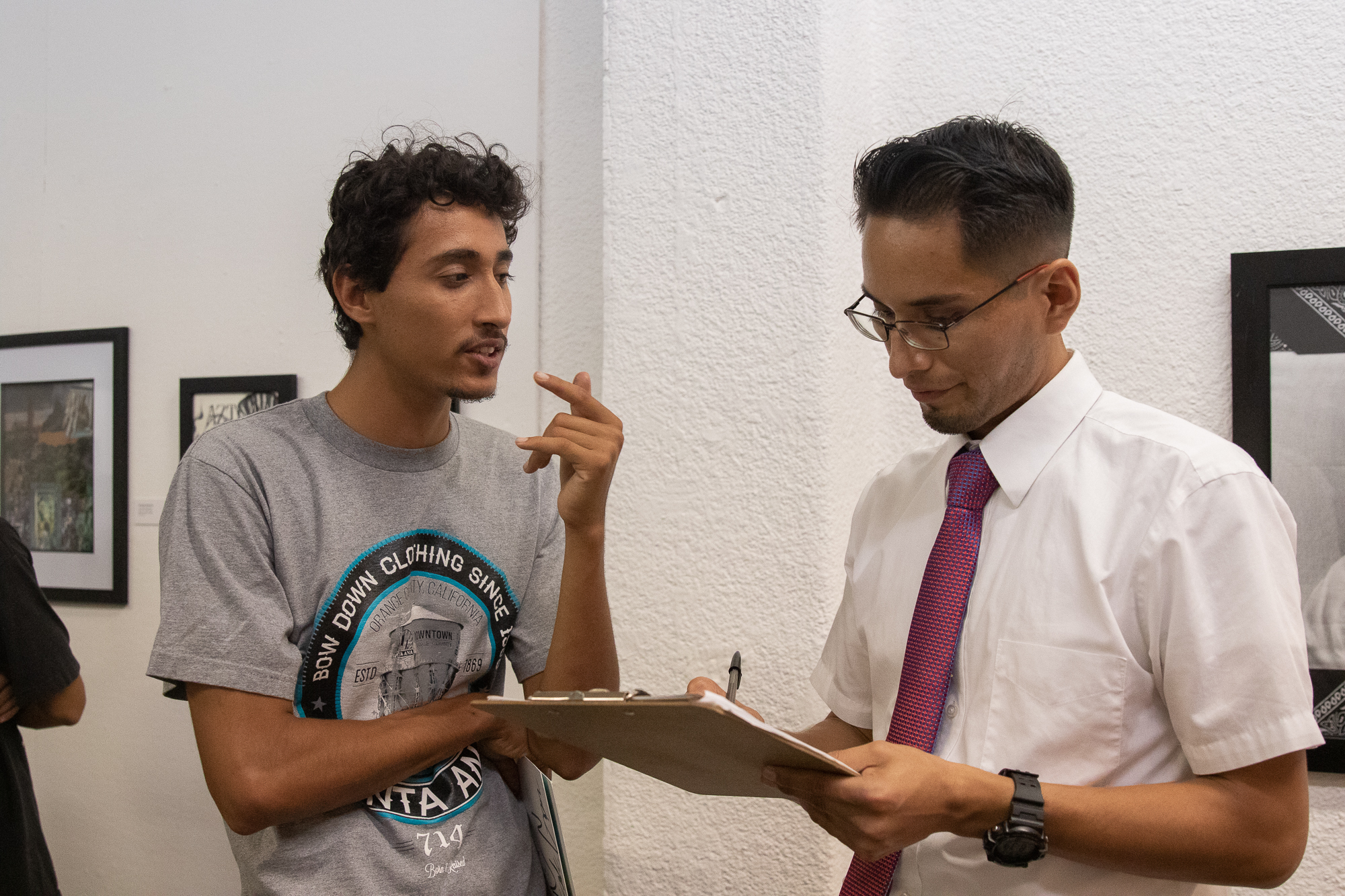
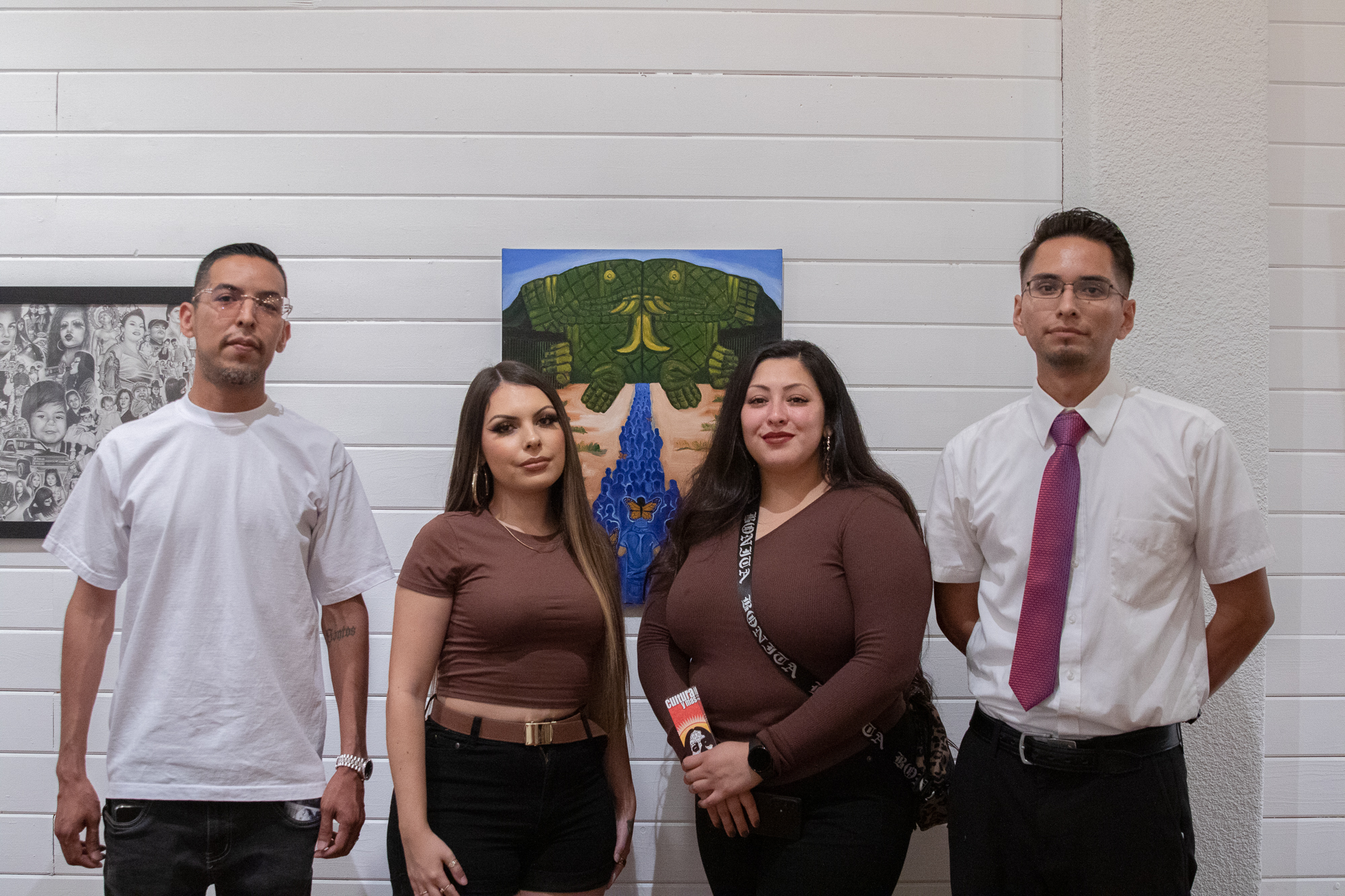
“Chicano art is usually very educative in nature. Every Chicano artist wants to tell you something,” said Roach.
Dozens flooded in and out of the gallery on Saturday afternoon. Constant laughter filled the space, many studied in awe while others bumped into old friends.
It was like a big family reunion.
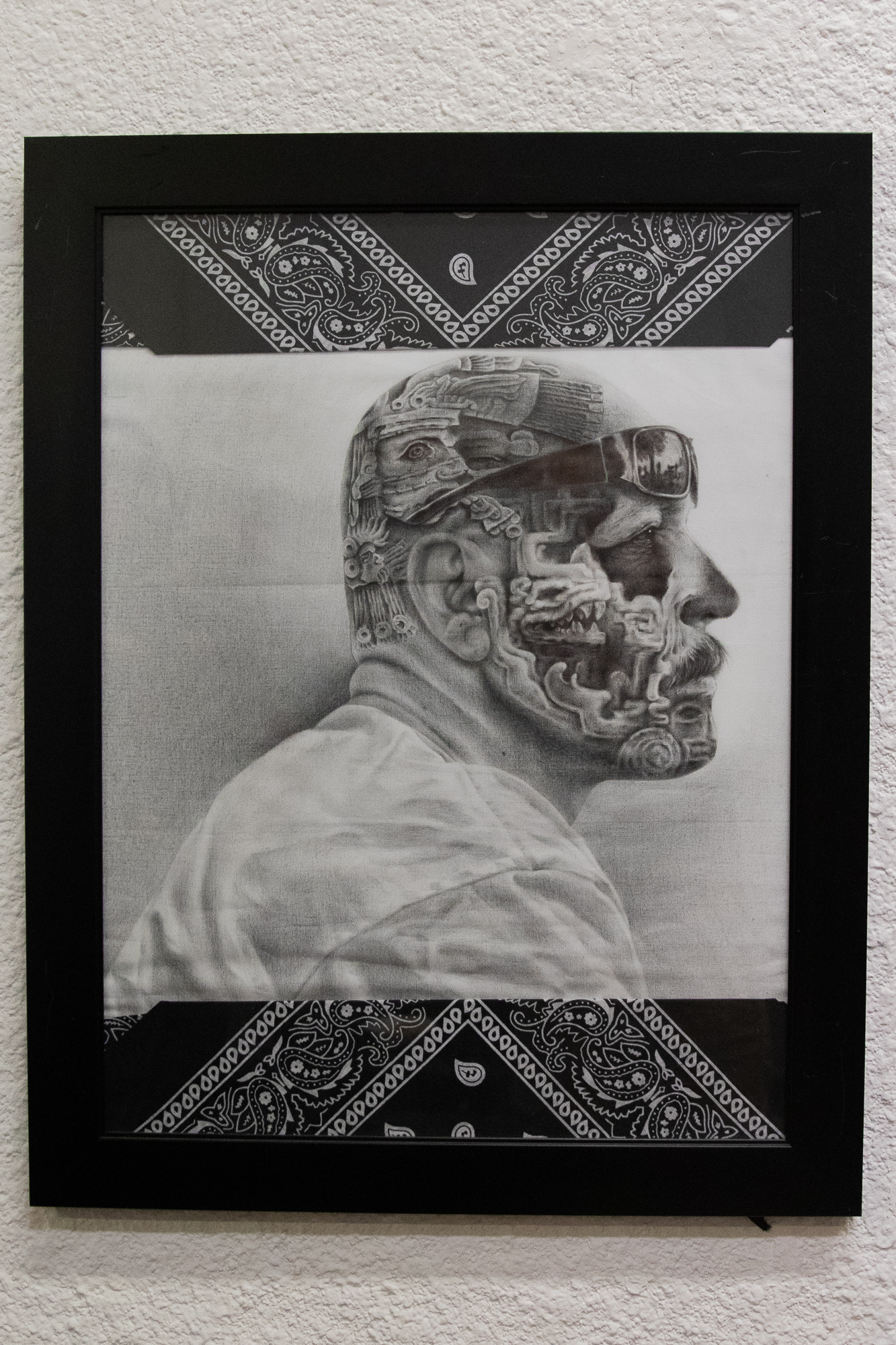
“Our ancestors fought so hard so that we could still be here,” said Chicana artist Tonantzin Reyes. “So that we can still pay homage.”
“That’s what it means for me to be a Chicana, you know, to always remember who you are, always remember where you’re from,” Tonantzin continued.
Tonantzin, a tattoo artist raised in Artesia Pillar showcased three drawings in Visions of Aztlan.
With a BIC pen and a led pencil, Tonantzin harmonizes the past and present of Chicano culture onto each canvas.
“Not only showing the struggle but showing the beauty that’s behind it. We’re so stereotyped and people just want to label us but there’s so much more depth and richness to our culture,” said Tonantzin.
One canvas titled ‘Mestizo’ depicts a man’s side profile with Quetzalcoatl and Tezcatlipoca tattooed on the side of his face. “It’s basically the creation of our Raza. I wanted to draw him with the tattoos on him to connect the past and the present,” said Tonantzin.
For this Chicana, her art is a reflection of her identity in finding her place in her community.
This artistic expression resonates with other Chicano artists as well.

Fabian ‘Listo’ Ceseña is a tattoo artist from Santa Ana but his ink is not limited to skin.
Listo showcased his most recent art piece at Saturday’s gallery. “It’s supposed to represent modern-day Chicano street culture. To be able to see the big picture, you have to see the good and the bad. Its like a two-piece puzzle. Can’t have one without the other, thats why I called it the yin and yang,” he said.
Showcasing alongside Listo was Gisselle ‘Peks’ Reyes, his girlfriend.
Peks has showcased art in the gallery for the past three years. But to her, “it always feels like the first.”
“It’s nice that we all come together and experience the same things,” said Peks. “In a way, it represents what we’ve all been through. Not just us but our parents.”
Tonantzin, Listo and Peks hope to pass on these stories through their art.
In this space, the artist became the teacher.
“It was humbling, I felt like a student. I felt like I was learning more about myself,” said Councilmember Johnathan Ryan Hernandez.
As a five-generation Santa Ana Chicano, Johnathan has fought to make sure Chicanos have a seat at the table. Hernandez introduced the Chicano Heritage Festival in 2022 and declared August as Chicano Heritage Month in 2021.
Hernandez defines being Chicano as accepting his identity and acknowledging the roots that were stolen from him.
“It’s also a non-anglo version of myself,” said Hernandez. “Understanding that their identity as Mexican-American, it’s political in the sense that they want us as Chicanos to assimilate to whiteness.”
Like Hernandez, other Chicano artists find it imperative to stand out and cultivate their community.
“It’s empowering to see residents from the same neighborhood that I grew up in. I see my own family stories depicted on these walls,” said Hernandez.

Johnathan Hernandez came out to support Visions of Aztlan because “James has been a leader int he Chicano movement. He’s been focused on bringing Chicano and Chicana artists together to ensure that our untold stories have a home.”
In Visions of Aztlan, over twenty artists told their own stories of what Aztlan means to them.
But what is Aztlan?
“Aztlan to me is like a home. This is my home. It’s also land that was taken from the Aztec people. It’s more of Chicano mythology,” said Peks.
For SAC history Professor Angelina Veyna, Aztlan “means the homeland. For some people it’s not a particular place but instead it’s a way of being, a way of thinking.”
Historically, Aztlan is believed to be the homeland of the Aztec people. Most prevalent in Chicano mythology, Aztlan refers to a utopian place of origin that has since been lost and colonized. Aztlan can be translated to “the place of herons.”
“If we aren’t wanted by the U.S. and Mexico, then we create our homeland. Hijos de Mexicanos but born here. Este es nuestro Aztlan,” said Professor Veyna.
You can see this collection of stories again on Oct. 7 during the DTSA Artwalk in the Santora Building on 207 N Broadway.
“Seeing this, it’s a reflection of ourselves,” said Hernandez. “It’s medicine and you’re just amongst it.”
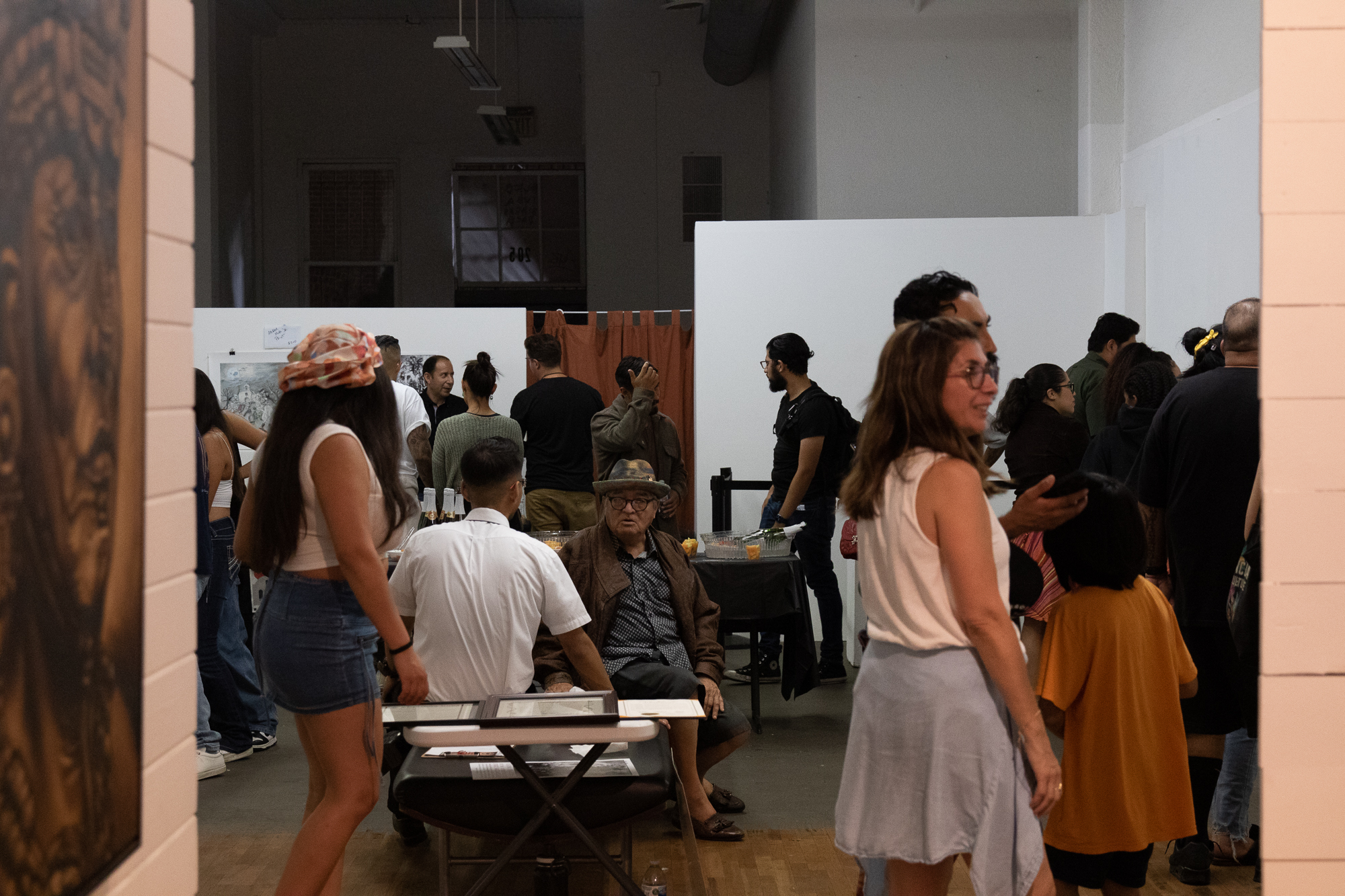
- District considers a $720 million bond for November ballot - May 15, 2024
- Black Zone: a home for rockeros and metalheads - April 3, 2024
- Public is kicked out of Santa Ana city hall after protests swell - December 23, 2023



